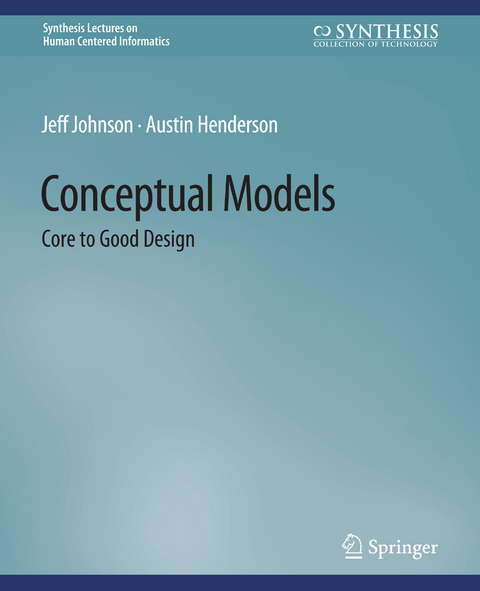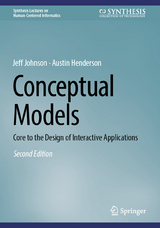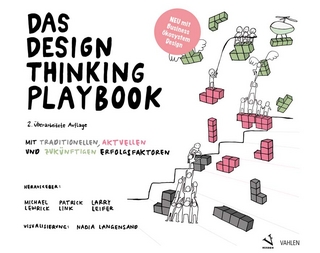
Conceptual Models
Springer International Publishing (Verlag)
978-3-031-01067-5 (ISBN)
- Titel erscheint in neuer Auflage
- Artikel merken
Jeff Johnson is President and Principal Consultant at Wiser Usability, a consulting firm specializing in elder usability and accessibility. He has worked in the field of Human-Computer Interaction since 1978. After earning B.A. and Ph.D. degrees from Yale and Stanford Universities, he worked as a user-interface designer and implementer, engineer manager, usability tester, and researcher at Cromemco, Xerox, US West, Hewlett-Packard Labs, and Sun Microsystems. He has taught at Stanford University and Mills College,and in 2006 was an Erskine Teaching Fellow at the University of Canterbury in Christchurch New Zealand. He has published numerous articles and book chapters on a variety of topics in Human-Computer Interaction and the impact of technology on society. He frequently gives talks and tutorials at conferences and companies on usability and user-interface design. His previous books are: GUI Bloopers: DonaEURO (TM)ts and Dos for Software Developers and Web Designers (2000), Web Bloopers: 60 Common Design Mistakes and How to Avoid Them (2003), GUI Bloopers 2.0: Common User Interface Design DonaEURO (TM)ts and Dos(2007), and Designing with the Mind in Mind: Simple Guide to Understanding User Interface Design Rules(2010).Austin Henderson's 45-year career in Human-Computer Interaction includes user interface research and architecture at MIT's Lincoln Laboratory, Bolt Beranek and Newman, Xerox Research (both PARC and EuroPARC), Apple Computer, and Pitney Bowes, as well as strategic industrial design with Fitch and his own Rivendel Consulting & Design. Austin has built both commercial and research applications in many domains including manufacturing, programming languages, air traffic control, electronic mail (Hermes), user interface design tools (Trillium),workspace management (Rooms, Buttons), distributed collaboration (MediaSpace), and user-evolvable systems (Tailorable - ""design continued in use,"" Pliant - ""designing for the unanticipated"" and ""scalable conversations""). These applications, and their development with users, have grounded his analytical work, which has included the nature of computation-based socio-technical systems, the interaction of people with the technology in those systems, and the practices and tools of their development. The primary goal of his work has been to better meet user needs, both by improving system development to better anticipate those needs, and by broadening system capability to enable users themselves to better respond to unanticipated needs when they arise in a rich and changing world.
Using Tools.- Start with the Conceptual Model.- Definition.- Structure.- Example.- Essential Modeling.- Optional Modeling.- Process.- Value.- Epilogue.
| Erscheinungsdatum | 06.06.2022 |
|---|---|
| Reihe/Serie | Synthesis Lectures on Human-Centered Informatics |
| Zusatzinfo | XIII, 96 p. |
| Verlagsort | Cham |
| Sprache | englisch |
| Original-Titel | Conceptual Models |
| Maße | 168 x 240 mm |
| Gewicht | 228 g |
| Themenwelt | Mathematik / Informatik ► Informatik ► Betriebssysteme / Server |
| Informatik ► Software Entwicklung ► User Interfaces (HCI) | |
| ISBN-10 | 3-031-01067-1 / 3031010671 |
| ISBN-13 | 978-3-031-01067-5 / 9783031010675 |
| Zustand | Neuware |
| Informationen gemäß Produktsicherheitsverordnung (GPSR) | |
| Haben Sie eine Frage zum Produkt? |
aus dem Bereich



